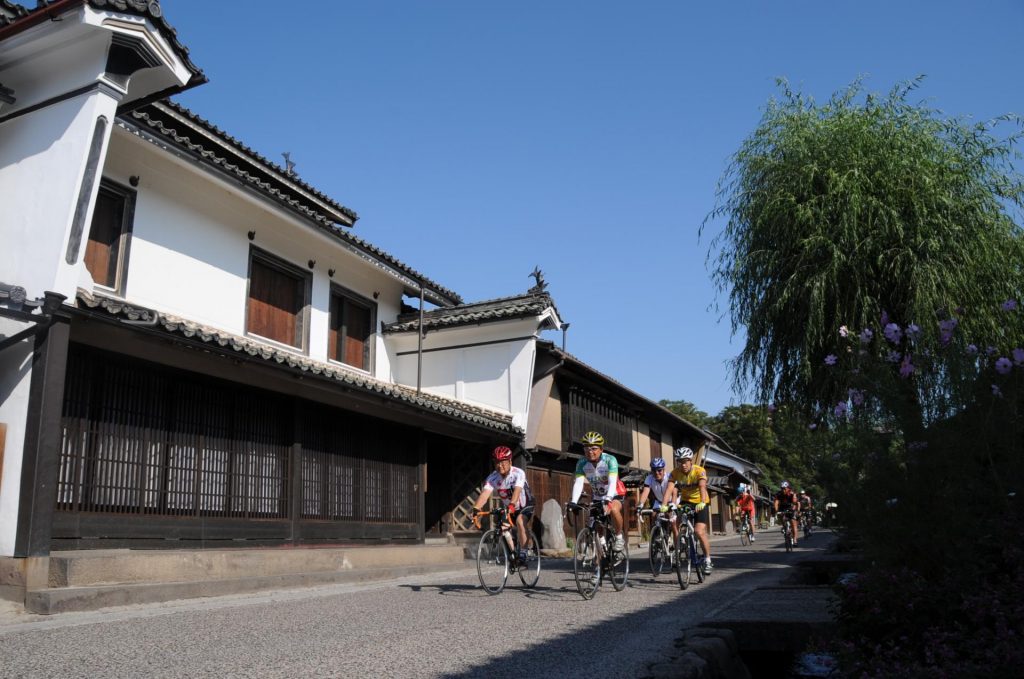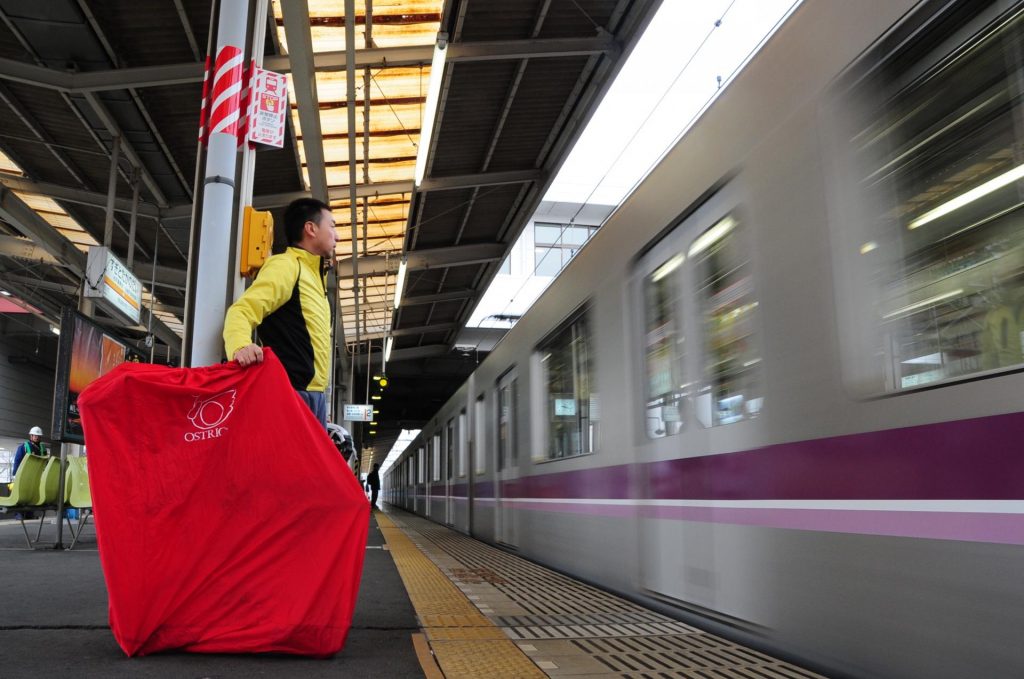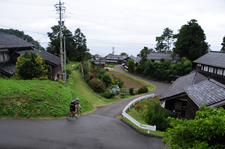A Cycling Journey to Experience the Local Life in Japan

Why cycle Japan? What most cyclists, Japanese and foreigners alike, find alluring about cycling this country, even more so than the safety, cleanliness and hospitality, is the constant change. I agree. I often bike overseas, especially in mountainous regions in the Himalayans and the Andes. What amazes me most upon my return from such trips is that the scenery always keeps changing while cycling in Japan. In a matter of minutes, it alternates between a village, a field, sea, mountains and so on. What awaits me after the next turn? I find myself pedaling harder with anticipation.
The key in stitching together a good cycling route in Japan is road selection. Main national routes across the country are lined with chain restaurants and electronics stores and others of the kind. They are also heavily trafficked and dangerous to bike on. Naturally, you see very few people on the roadside. This changes dramatically once you veer off onto less traveled roads.
In cycle touring, I believe the roads on which you ride matter much more than areas you travel or points you visit. Popular tourist destinations such as temples and museums have their attractions but I would rather be closer to local people and their life while pedaling—and stopping from time to time.
This is exactly why I have published many cycling guides and most recently, “CYCLING JAPAN: 10 of the Best Rides, Volume 1.”
Faceless roads do not interest me. I like roads to be part of communities, which we cyclists can share with people walking and talking just the way they have been for many years.

Transporting your bike and luggage
Japanese public transportation does not allow cyclists to carry on bicycles with both wheels attached. You need to remove at least one wheel and place it, with the frame, in a rinko, or bicycle carrying bag. These are available at specialty bike shops in major cities.
A rinko bag also comes in handy when you need or want to quit the ride or take shortcut. Other pieces of luggage can be sent by takyubin (parcel delivery) to/from a hotel or a depot station. Takyubin is available all post offices and most convenience stores.
Takashi Niwa
Takashi Niwa founded and runs Yamamichi Adventure (Web: www.yamamichi.jp). He actively organizes cycling tours and guides people to many places in Japan and around world, from back alleys of Tokyo to remote villages in Tibet. Takashi has also authored many cycling books and guides. He is a Specialized Rider.
Hokkaido: Northbound to Cape Soya
Cape Soya is one of Japan’s most sacred cyclo-pilgrimage destinations. It is the northernmost spot in the country—that alone is what lures many cyclists. But that is only a part of the story.
The stereotypical image of Japan being jam-packed does not apply to Hokkaido, the northernmost of the four main islands that make up the Japanese archipelago. Riding out of Asahikawa, Hokkaido’s second largest city and regional hub, head directly north to “land’s end.”
After Asahikawa there are no major cities as the route detours to avoid bustling Route 40. Traffic is light and there is not even a single convenience store for nearly 100 kilometers. You can hardly believe this is Japan! The biker’s imagination turns these vast stretches of land, forest and water into a cycling heaven.
Enjoy the brief summer of Hokkaido, when fields, pastures and forests are all covered with a brilliant verdure, before the first snow hits the ground sometimes as early as October. Red foxes and ezo shika (shika means deer and ezo is the ancient name for Hokkaido) may greet you along the way.

As the land narrows between the sea to the east and west, you will be entering the Sarobetsu Mire. There are no more mountains that hinder your view and the land meets the sky at the horizon. Mount Rishiri (aka Rishiri Fuji), the conical shape resembling Mt. Fuji, gradually stands out from the sea as you pedal north.
You pass the small city of Wakkanai and cruise along the coast of Soya Bay. On a fine day, you will see Karafuto (Sakhalin Islands) on the other side of the channel. The coastline winds its way several times past “fake” capes before reaching Cape Soya. Voila! You have reached the northernmost land in Japan.
[Route information]
Total distance: 330.6 km. (from Asahikawa to Cape Soya)
Best in: June to September





